8CountMixer SNEAK PEEK Make Your Own Cheer Music June 2nd
The big day is Monday (June 2nd)! For the first time in the world, you can build your own cheerleading music by dragging and dropping 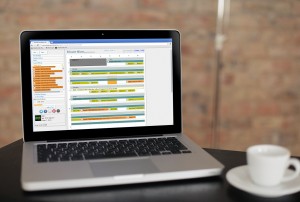 songs, sound effects and voice overs directly onto an 8-count sheet, and press play!
songs, sound effects and voice overs directly onto an 8-count sheet, and press play!
It’s the only 8-count sheet with a play button!
Build a mix in minutes, or spend extra time perfecting a customized mix to match your routine. 8Count Mixer gives you the capability and control to produce your own cheer mix.
Throughout the year, we will continue adding even more songs and voice overs to give you the largest and best selection of sounds available on the internet.
CheerSounds Lab: Sneak Peek at the Champion’s Cup Anthem
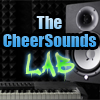 Justin and I spent 8 hours today chipping away at some awesome synth sounds for this Anthem track I wanted to make as a piece of the Champion’s Cup cheer mix. It definitely veered off course of a cheer mix (and this particular section isn’t meant to sound like a cheer mix), so we still have some work to do to bolt it down into the rest of the mix we built for Champion’s Cup. However, as far as being a “complextro” track mixed with aggressive rap lyrics, it’s pretty killer and I wanted to share it!
Justin and I spent 8 hours today chipping away at some awesome synth sounds for this Anthem track I wanted to make as a piece of the Champion’s Cup cheer mix. It definitely veered off course of a cheer mix (and this particular section isn’t meant to sound like a cheer mix), so we still have some work to do to bolt it down into the rest of the mix we built for Champion’s Cup. However, as far as being a “complextro” track mixed with aggressive rap lyrics, it’s pretty killer and I wanted to share it!
CheerSounds Lab: SoundAlikes & How We Trick You!
We have tricked many of you! Yes, it sounds bad, but we do it BECAUSE WE LOVE YOU! 😀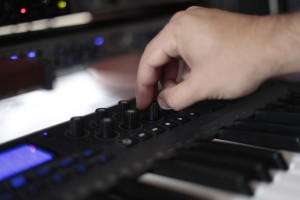
Well, it’s not really trickery, because it’s written all over our website. CheerSounds uses what is known as Sample Replay, or SoundAlikes of popular songs when we are selling or distributing music to the public. This means that we cannot use the original recordings of a song (the versions you hear on the radio) in these scenarios. Instead, we recreate the song from scratch by re-recording all of the parts ourselves. By doing this, we now own the rights to the recording and have more flexibility with what we can do with the song.
CheerSounds is the only cheerleading music company using this technique, which keeps our clients and ourselves out of legal trouble. This process is something we kept secret for a while, but we decided that secrets are silly and we’d love to show you the amazing work that goes into these sound-alike projects!
CheerSounds has developed an impressive network of vocalists and musicians, and employs extremely talented engineers and producers to create these projects on a full-time basis.
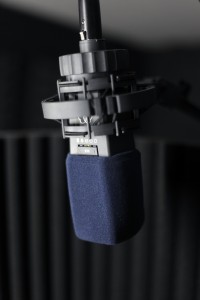 One by one, we pick apart the track and reproduce the parts. The right vocalist is chosen to emulate the original artist, and he/she begins practicing the part. The musicians replay the musical lines, and the engineers create synthesized sounds. After the unprocessed recordings from the vocalists and musicians are complete, the engineer processes them and produces the rest of the project. This entire process is quite time-consuming, but very rewarding.
One by one, we pick apart the track and reproduce the parts. The right vocalist is chosen to emulate the original artist, and he/she begins practicing the part. The musicians replay the musical lines, and the engineers create synthesized sounds. After the unprocessed recordings from the vocalists and musicians are complete, the engineer processes them and produces the rest of the project. This entire process is quite time-consuming, but very rewarding.
This post’s featured video gives you some insight into the engineer’s job and how we put together a Sample Replay / SoundAlike project. After the SoundAlike is complete, it moves on to be remixed and cheer-ified for you to use!
How We Help: My Cheer Music Doesn’t Sound Like Cheer Music
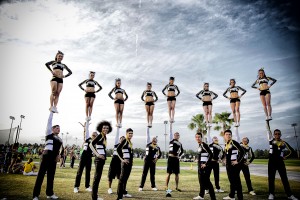 On occasion, a coach will bring us music made by a local DJ, and his/her main complaint is “the music doesn’t sound like cheer music”. It’s a common mistake that many of us have made, but we live and learn!
On occasion, a coach will bring us music made by a local DJ, and his/her main complaint is “the music doesn’t sound like cheer music”. It’s a common mistake that many of us have made, but we live and learn!
Cheerleading music is, for lack of a better word, weird. It is very alien to those who are not part of the industry. Bringing a cheer music request to an unfamiliar music producer usually results in a mix that sounds more like house music, or Saturday-night club music. It does not mean the DJ is bad, it just means he/she is not familiar with our unique style of music.
Cheer music is very “A.D.D.” and most people would not think to design a piece of music that changes so rapidly. At half the length of a radio song, mixes usually contain 6-8 songs plus another 6 voiceovers or raps! Non-cheer music producers also wouldn’t add in obnoxious laser sounds and explosions that stand out from the music. But we do, because it is part of our industry and part of our routine. These unique sounds, styles and flows define cheerleading music.
Another cause of this is sometimes producer talent. There are a large group of aspiring musicians, djs or producers that can hear the difference between two mixes, but do not know how to achieve the sound that they (or you) want. This is something that comes with time or experience, and their best mixes are likely ahead of them. Keep training!
In the scenario where a coach brings us “dj music”, we usually recreate the music from scratch, using the same requests that were given to the first DJ. The result, of course, sounds like cheerleading music.
Unless you specifically request a house mix, there won’t be any cheer mixes with a repetitive “bump bump bump” without giant explosions, wobbly risers and overly-excited voice overs coming from us. 😀
CheerSounds Lab: Tech Talk & Our Best Tip About FX
We rec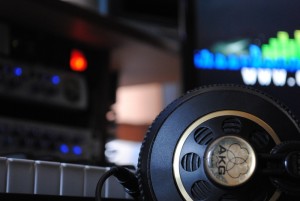 eive a lot of questions each week about cheer music, and every so often we receive questions about how to actually make cheerleading music. These are technical questions regarding cheerleading music production (or any type of music production, for that matter). One question I hear often is about the effects we use, particularly:
eive a lot of questions each week about cheer music, and every so often we receive questions about how to actually make cheerleading music. These are technical questions regarding cheerleading music production (or any type of music production, for that matter). One question I hear often is about the effects we use, particularly:
What are your go-to effects for EQ and Compression?
The group of us could ramble off all of the plugins we used in each of our last projects, but that would not be nearly as helpful as the response that I usually give, which is the following:
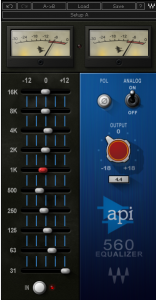
Audio Effects/Plugins are paint colors. Each one looks (sounds) different. You can have your favorite color, but it doesn’t mean it is the best color. The art is in how you use them whether on their own or together.
Leaving the analogy behind, I will provide an example of what I mean.
This past week, we were recording a new female vocalist for a singing part. Her voice was rather thin, and we were emulating the Britney Spears vocal production. Usually, I dislike warm vocals – especially in pop music – but the artist’s voice was really hollow in the 400-800 range and did not fill the spectrum in the same way that Britney’s voice did in the target track.
Part of that “overproduced britney sound” is heavy comb filtering, which we had already done across the spectrum. This cuts out on a lot of the ugly resonance, leaving “pretty” harmonics behind. Normally, this gives a “smooth, glossy, warm” feeling, but there was minimal warmth coming from the original recording. Naturally, the first step was to try a few EQs to boost that range after the comb-filter, or cut the other ranges, but it just wasn’t giving the character we wanted – it sounded more like a proximity effect rather than a natural warmth. One of the producers suggested taking a characteristic EQ, like an API-560 to her voice, but it just wasn’t giving it the body we wanted. My second idea was to use a harmonic exciter, but this was really taking the sound in a “talking through a tube” direction which I did not want it all. I had one more idea, though.
I knew part of the target Britney sound was artificial; I could hear harmonics that I knew weren’t really prominent during the original performance. This was likely due to analog gear not only being superior in compression capabilities, but also in adding analog distortion and warm harmonics, which we were not using during this recording.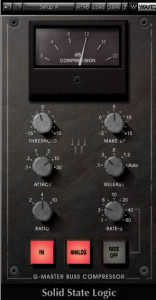
So I had a thought: I usually dislike the Waves SSLComp plugin because although it is amazingly clean (even when driven!), it adds tons of warmth to emulate the character of those famous consoles. Normally, I would not use this compressor on any vocal tracks unless it was jazz/r&b (personal preference), but I had a feeling it would add that warmth – however the heck it does it!. I drove the signal through it with a few adjustments and BAM, there was the body that I wanted!
One step closer to what I wanted, but still not all the way there. The tone was a tad nasal, a tad “too much 3k but eq wont fix it”. Thinking back on a Cher reproduction we did (which involved some freakish vocal effects), formant shifting – even in slight amounts – can make a huge difference in overall tonality. I took this poor artist’s voice and shifted her formant down about 60 cents. WOW. Hearing her age about 10 years, without creating noticeable artifacts was just what this track needed. This project was getting better and better!
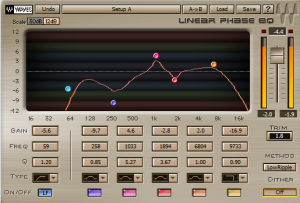
Now, any time you formant shift, the brightness of the track is decreased. This can be challenging to make it as pristine as the original recording. I used one EQ post-formant-shift to makeup some of the brightness. Luckily, I was planning on Low-Passing at 12k anyway, so I did not need all of the pristine air.
Carmine, you are rambling. What is your point?
My point is: Picking a few plugins for everything is the best way to pigeon-hole your skills. LEARN YOUR TOOLS! Learn the character of every plug in you have. Know what will give you crunch, what is clean, what is warm, learn which plugins create artifacts and which do not, etc. etc. because they are all useful.
Make Counting Easy: Download 8-Count Click Tracks!
Click-tracks and count-tr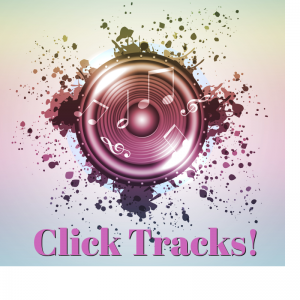 acks used to be just for filming a routine to simplify music synchronization. However, many teams are using them for practice, as well as for when creating count-sheets at practice. These simple tracks play music beats and say each 8-count and beat as you perform the routine!
acks used to be just for filming a routine to simplify music synchronization. However, many teams are using them for practice, as well as for when creating count-sheets at practice. These simple tracks play music beats and say each 8-count and beat as you perform the routine!
They are available at a 2:30 length in a variety of tempos. Most teams use 144 beats per minute. More advanced teams use a faster speed. This is a great way to determine what speed your mix should be even before you order music!
Click Here To Download The Click Track Pack zip file containing 5 click tracks from 137BPM to 150 BPM.
Here is one of our click-tracks (at the most common tempo of 144bpm) for preview or use at practice:
CheerSounds_ClickTrack_230@144bpm
Where Do Voice Overs Come From?
Many of our customers think cheer voice overs come out of a computer – like a robot or some kind of voice over generator. However, this is not true! Voice Overs are written and performed by people 🙂
When we work on a mix, the first thing running through our minds is voiceovers – even before the music! The vocal process continues to run parallel to the music production process to ensure that the vocals make sense with the mix. We record them “raw”, and then add effects as needed. Some tracks (like the telephone effect) only have 3 or 4 effects, but other tracks like the big yell track have 12 effects on to create that room-filling yell! And, to be totally honest, it would sound pretty lame without those!
The process is much more involved, but I hope this quick video has shed some light onto how our voice overs are made.
P.S. Edward says I look “scruffalicious” in this video.
How We Help: My Cheer Music Doesn’t Fit Our Style!
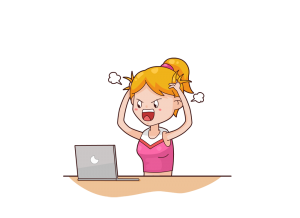 A musical vision can be difficult to convey. It is filled with emotion, style and subjection which can all be very difficult to put into words. From a music perspective, It is easy to throw a cheer mix together; the challenge is to put a team’s style into music.
A musical vision can be difficult to convey. It is filled with emotion, style and subjection which can all be very difficult to put into words. From a music perspective, It is easy to throw a cheer mix together; the challenge is to put a team’s style into music.
Sometimes, a coach will bring us his/her current music with the worry that it does not fit the team’s style. This can be challenging to remedy, because the mix they have may be great, but simply doesn’t jive well with the team’s attitude, aura, presence, energy, culture, style, etc.
Our solution to this problem is to rely on our cheerleading and musical experience. We ask the team to provide us with a video of their practice. Practice is a very organic environment; we get a taste of how the team interacts with one another, how they motivate each other and how they work together. This can be drastically different from team to team, region to region, and especially with international teams. By watching a team’s practice, we can interpret the amount of character, sassiness, aggression and momentum that the team’s music needs with amazing precision. Putting a team under the magnifying glass ensures that our music interlocks with their routine, and always results in absolute satisfaction! Although we have to remake the cheerleading mix for the customer, they get a new mix that matches their choreography and their team’s vibe. Much better.
Although customers sometimes find it weird to send a video of practice, they are amazed by the results and return year after year with videos of their practice performances.
How We Help: I Need A Dance Cut!
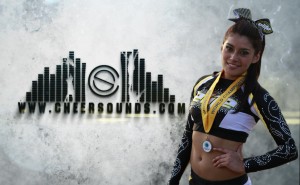 It seems like almost every All Star coach calls during the season and says “The dance choreographer is coming, can I have a dance cut? How much does that cost?”
It seems like almost every All Star coach calls during the season and says “The dance choreographer is coming, can I have a dance cut? How much does that cost?”
The answer is: Yes! We complete many dance cuts before starting the rest of the routine’s music. A dance cut is $99 which is applied to the total cost of your cheer mix. Dance cuts are usually between 4 to 6 8-counts plus an intro, and features our remix of one or two songs of your choice. They can often be completed within a week from the order date.
Note: CheerSounds does not create dance cuts without the scheduling of a complete cheerleading music mix.
CheerSounds Lab: Big & Aggressive?
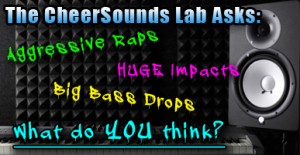 A large portion of our work is to create new sounds, advance existing styles and try new things with our cheerleading music. While working on a mix for Crimson Heat Tigers Sr4, we put on our fighting gloves and went bigger than usual. Now, we are curious of what you think of it! Comments are welcome on the Facebook post, and on SoundCloud!
A large portion of our work is to create new sounds, advance existing styles and try new things with our cheerleading music. While working on a mix for Crimson Heat Tigers Sr4, we put on our fighting gloves and went bigger than usual. Now, we are curious of what you think of it! Comments are welcome on the Facebook post, and on SoundCloud!
Note that small speakers such as cellphone or laptops will not do justice to this recording! Having a sub or larger system will help convey the sound, and you can only imagine how huge it would be in an arena!
 CheerSounds
CheerSounds